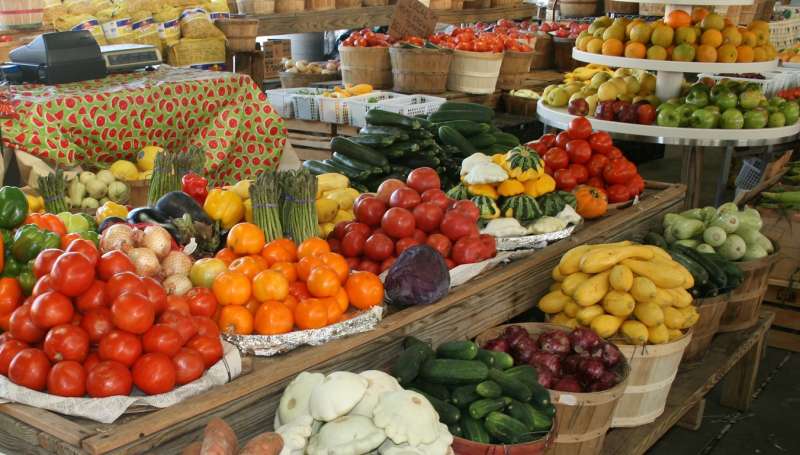New study compares transportation energy efficiency of local and conventional food

Two researchers at the University of Tennessee Institute of Agriculture find that farmers located closer to city centers seem to have a locational advantage in transportation over their long distance, conventional food supply chain competitors.
In an article published June 20 in the spring 2016 issue of the Journal of Agriculture, Food Systems, and Community Development, Chuck Grigsby, marketing specialist with the UT Center for Profitable Agriculture, and Chad Hellwinckel, research assistant professor of agricultural and resource economics, compared the transportation efficiencies of the conventional and local fruit and vegetable transportation networks in the Knoxville-area surrounding the University's flagship campus.
After systematically studying the transportation efficiency of local farmers in the Knoxville region, the researchers highlight two main factors that impacted local farmers' competitive advantage in transportation:
(1) Farms located within 25 miles of the downtown market tend to deliver their produce to market at least as efficiently as conventionally distributed foods from California; and
(2) More distant farms need to scale up their production and distribution operations to remain within the competitive transportation zones.
The authors reached a third conclusion: defining travel distance thresholds of cities could provide policy-makers with useful information in planning land use and infrastructure investment projects for local food systems and for designating sustainable geographic boundaries for local food economies.
"We started by asking a simple question," says co-author Chuck Grigsby. "Can local farmers transport their products to market as efficiently as foods transported from distant locations, such as California, Florida or Texas? We found that in some cases the answer to this question is, "yes" but local farmers' competitiveness largely depended on their travel distance to market and their production and distribution scales."
Co-author, Chad Hellwinckel, further elaborates on the potential impact of the research: "Food systems where most of the local farmers are located near consumer markets may be more sustainable and resilient to sudden fuel price shocks. In our study, the farming operations closest to market usually had improved transportation fuel use efficiencies compared to foods shipped from California, despite the local farmers' relatively small truckload weights."
The authors believe that their conclusions could be useful to stakeholders working to build more resilient local food economies.
Journal information: Journal of Agriculture, Food Systems and Community Development
Provided by University of Tennessee


















